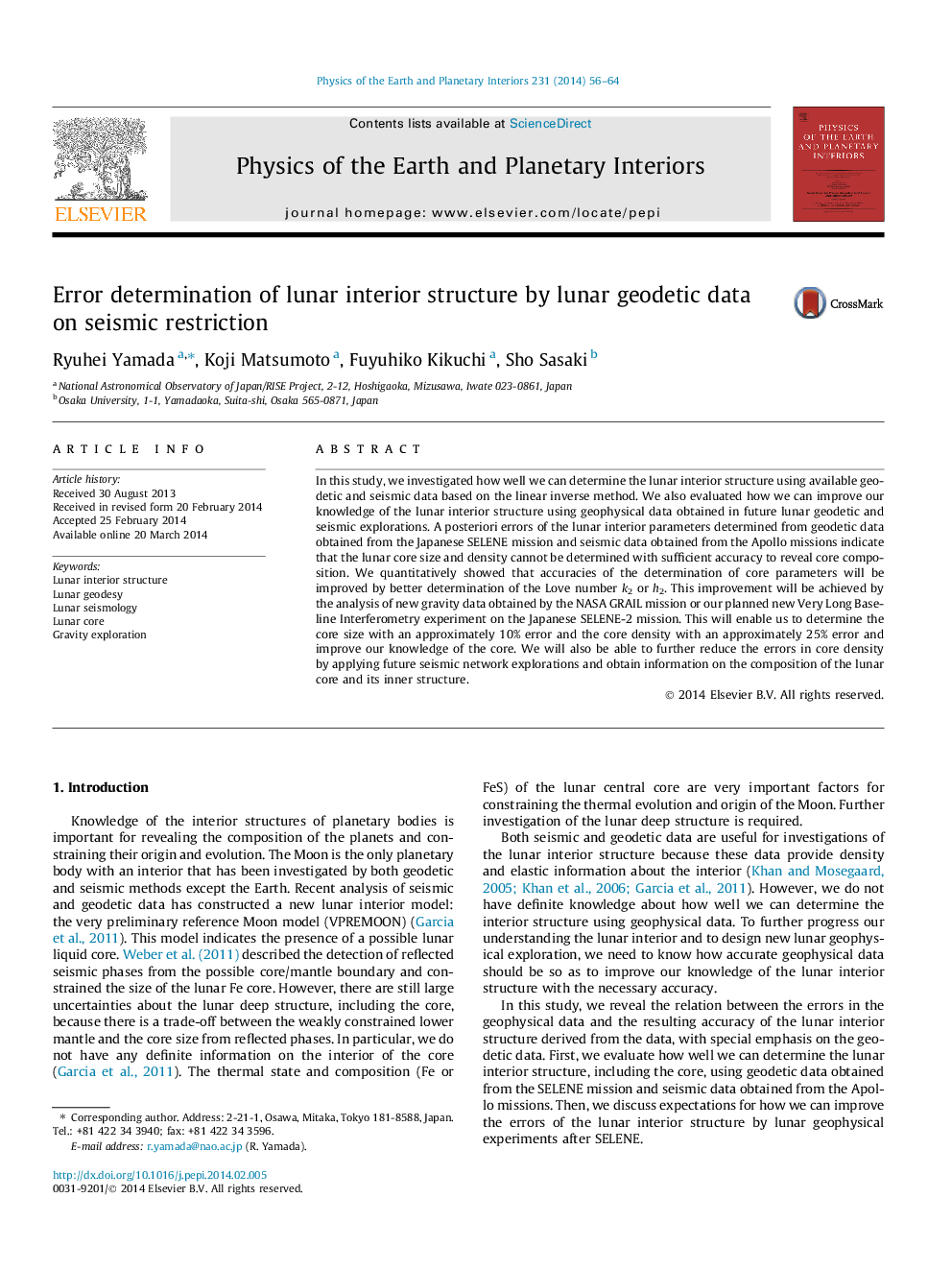| Article ID | Journal | Published Year | Pages | File Type |
|---|---|---|---|---|
| 4741530 | Physics of the Earth and Planetary Interiors | 2014 | 9 Pages |
•We evaluated errors of lunar interior determined by current public geophysical data.•We showed relation between lunar interior parameter errors and geodetic data errors.•Reduction in errors of Love numbers is effective to improve knowledge of lunar core.•The geodetic data from the GRAIL and the SELENE-2 are useful to reduce core errors.
In this study, we investigated how well we can determine the lunar interior structure using available geodetic and seismic data based on the linear inverse method. We also evaluated how we can improve our knowledge of the lunar interior structure using geophysical data obtained in future lunar geodetic and seismic explorations. A posteriori errors of the lunar interior parameters determined from geodetic data obtained from the Japanese SELENE mission and seismic data obtained from the Apollo missions indicate that the lunar core size and density cannot be determined with sufficient accuracy to reveal core composition. We quantitatively showed that accuracies of the determination of core parameters will be improved by better determination of the Love number k2 or h2. This improvement will be achieved by the analysis of new gravity data obtained by the NASA GRAIL mission or our planned new Very Long Baseline Interferometry experiment on the Japanese SELENE-2 mission. This will enable us to determine the core size with an approximately 10% error and the core density with an approximately 25% error and improve our knowledge of the core. We will also be able to further reduce the errors in core density by applying future seismic network explorations and obtain information on the composition of the lunar core and its inner structure.
